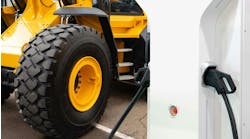Healthcare has been a fast-growing field, and there is little evidence that it will slow in the coming years, as baby boomers reach retirement age. The U.S. Bureau of Labor Statistics reports that education and health services will grow faster (by 30.6%) and add more jobs than any other sector through 2014.
As with any growing market, new technology is constantly vying for a piece of the proverbial pie. Here's a look at some interesting medical marvels in which pneumatics is playing a role.
Custom couplings to the rescue
Oxygen patients no longer have to rely on the delivery of pre-filled cylinders. A new transfill system from DeVilbiss generates oxygen via a concentrator and uses a compressor to fill mobile cylinders — cylinders that users can refill at home.
According to the American Lung Association, more than one million Americans have medical conditions that require the use of supplemental oxygen in order to engage in routine daily activities.
Sunrise Medical, one of the world's largest manufacturers of homecare and extended care products, sells a wide range of home respiratory systems under the DeVilbiss brand. Sunrise set out to develop an integrated compressed oxygen system to allow patients to easily refill their mobile cylinders at home. The new system was designed to eliminate the disruption to daily life.
"The transfill systems that were on the market were pretty intrusive for patients," said Sunrise vice president of product development Tim Walsh. "They were heavy, bulky, loud, and placed right next to the patient. So we decided to develop a smaller, quieter hybrid system that quickly fills mobile cylinders to give patients more freedom and home oxygen providers streamlined delivery. The unit can be placed in a separate room away from the patient."
In order to pull the system together, Sunrise called on Parker Hannifin's Quick Coupling Div. to develop a non-interchangeable quick disconnect coupling that could handle oxygen service up to 2000 psi, and connect and disconnect under pressures from 1800 to 2200 psi. The 2200 psi specification was presented by Sunrise as an extra safety measure. The pressure transducer that initiates the automatic shut off feature allows a certain percentage of air in its tolerance. Sunrise wanted to ensure safe operation even if the calibration was off, so they specified the coupling to operate at a higher pressure than necessary.
The specifications could not be met by any products in the current product offering, so the engineers at Parker started working on a custom solution.



